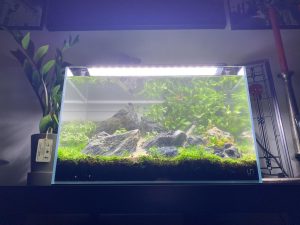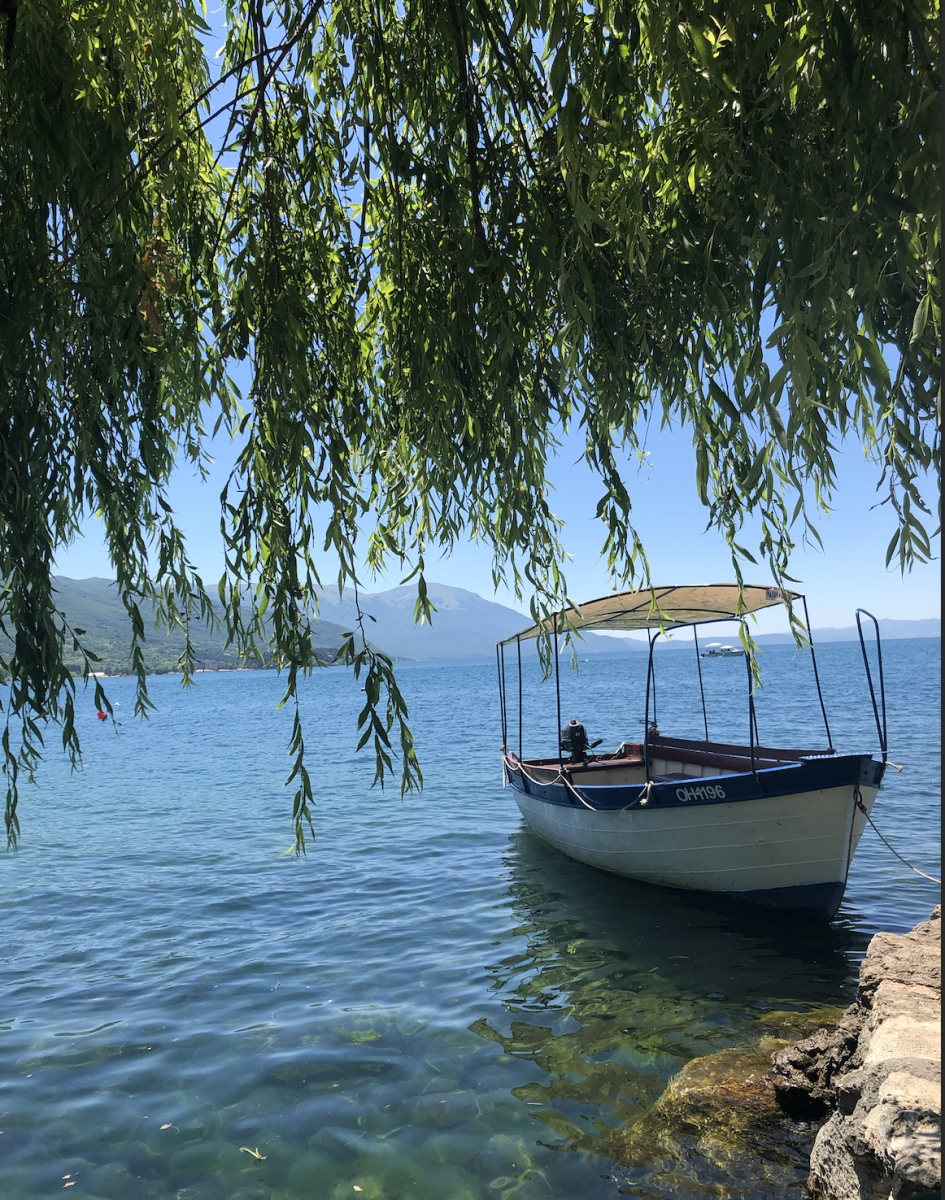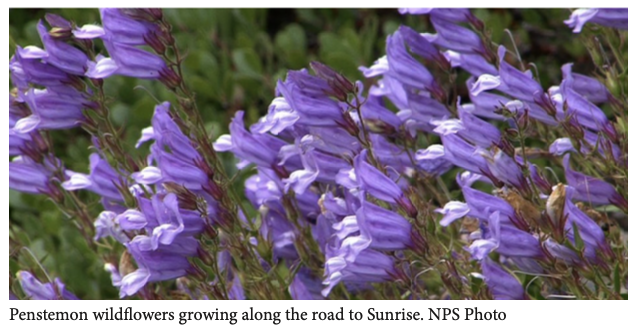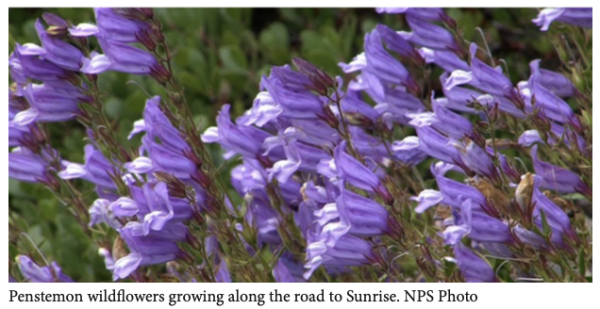Native Species Make Your Lawn Truly Green
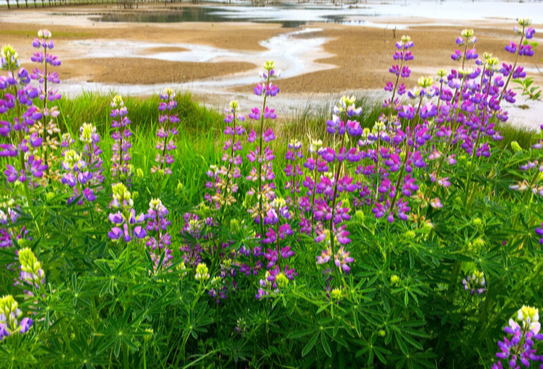
Large-leaved lupine is easily recognizable by its lance-like flowerheads.
March 6, 2020
You’ve heard of the trend— people tearing up their lawns to plant a garden of native species. Considering the great environmental cost of traditional lawns, however, it is actually not that radical of an idea.
According to a recent statistic released by the EPA, the average American household uses 17,532 gallons of water annually on landscaping irrigation alone. To put that into perspective, that is equivalent to nearly 11,000 toilet flushes.
Because grass is seeded at an unnatural density, the nutrients native to the soil are subject to rapid depletion. Lawns, therefore, develop a dependence on fertilizers. These fertilizers, which derive much of their function from their nitrogen content, contaminate storm runoff and enter local watersheds.
Ending up in Puget Sound, the nitrogen fuels algae growth, occasioning colorful algae blooms, one of which in 2016 was so profound the turquoise hue of Hood Canal could be seen from space. This algae growth, however, is accompanied by similarly exponential bacterial growth, causing an ecologically catastrophic process called eutrophication, which creates oxygen-devoid “dead zones” in the Sound.
Native plants can help remedy this problem caused by lawns, as they create no such environmental degradation. According to Bill Brookreson, a 13-year native plant steward for the Washington Native Plant Society (WNPS), “Washington’s native plants have evolved over time to fit our rather unusual climate — the very wet winters and a very dry summer.”
Brookreson went on to describe a plant’s adaptation to the local environment as a valuable asset. “Because of their evolution, after the plants are established, they require very little water if planted in appropriate conditions,” he said. “Our native plants also evolved to fit our native soils and do not require fertilizers.”
There are a number of local nurseries specializing in native plants, and the movement to incorporate native flora in landscaping has been building considerable momentum over the last decade. In response to the honeybee crisis, many gardeners have opted to plant native wildflowers to support bees and other pollinators.
Inkwell also spoke with Aimee Wright, publicity chair of the WNPS Whatcom County Koma Kulshan chapter, about the merits of native gardening. “Not only do native plants in private landscaping provide a low-maintenance alternative to lawns and exotic species from other areas, but they also serve many important functions for local and surrounding ecosystems,” she said.
“Because they already thrive in our climate, native plants are less likely to need pesticides or herbicides, which means less in our water and the surrounding landscape,” Wright continued. “Native plants also support native pollinator insects, and they act as places of refuge and food for animals, like birds. In a world where so many wild places are becoming smaller and farther apart, native plant gardens serve as bridges between wild areas certain animals need in order to thrive.”
How can you join the growing movement to plant native flora? You do not have to completely re-landscape your yard to make a difference. Here are a variety of easily obtainable, hardy, and attractive native perennials that you can add to your yard.
Yarrow (Achillea millefolium)
A common wildflower that can tolerate dry and compact soils, yarrow can be planted densely and mowed to just a few inches. Its soft, lacy leaves create a turf that from a short distance looks just like conventional grass, but is softer to walk on and requires none of the chemicals.
Douglas & New England Aster (Aster subspicatus & Symphyotrichum novae-angliae)
Both species of aster form small bushes that from late July through October are covered in small purple daisy-like flowers. A favorite of bees, aster is a hardy, independent plant that can add color to a patch of grasses.
Redwood Sorrel (Oxalis oregana)
Sorrel is a shade-loving, clover-like groundcover, which, though native, spreads like a weed, quickly adding verdure to any adjacent open soil. Named oxalis due to its content of oxalic acid, its leaves lend a lemony bite to a spring salad.
Large-Leaved Lupine (Lupinus polyphyllus)
With tall, spear-like flowerheads, lupine can easily add a conspicuous measure of dark purple to a garden. No specimen for the manicured English garden, this plant has a distinctly rugged charm, with its thick flower stem growing up to 5 feet tall, and its umbrella-like leaves branching any which way they choose.
Idaho Fescue (Festuca idahoensis)
A good replacement for the exotic fescue species commonly planted in lawns, Idaho fescue is tall, relatively erect, and stately bunchgrass that varies from green to brown after late spring, and green to blue as it produces new growth earlier in the season.
Lanceleaf Coreopsis (Coreopsis lanceolata)
With golden yellow flowers straight off an oilcloth print, lanceleaf coreopsis stands out among native plants, having the rustic, disheveled charm of a dandelion, and the cheerfulness of its distant cousin the sunflower.



